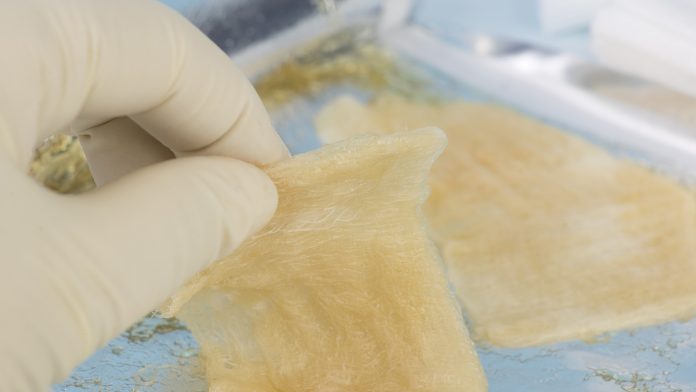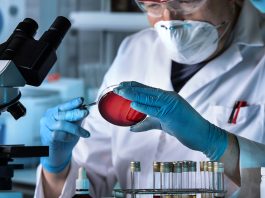Researchers have pioneered a novel hydrogel that promises to overcome antibiotic resistance associated with some wound care practices.
The experts have developed a hydrogel that not only simplifies synthesis but also possesses inherent antibiotic properties while facilitating cell proliferation.
The study, published in APL Materials, may have profound effects on the chronic wound care landscape.
Limitations of traditional hydrogels
Hydrogels, renowned for their efficacy in addressing skin ailments and tissue engineering, have long been hailed for their biocompatibility and water retention properties.
However, their manufacturing complexity and vulnerability to external forces have posed challenges.
Moreover, the need for incorporating antimicrobial agents to combat infections has raised concerns regarding antibiotic resistance and cell growth inhibition.
Lead author Jing Sun highlighted the critical need for effective wound care: “A diabetic patient may have skin wounds that do not heal easily due to metabolic disease.
“The patient may try to treat the wounds with topical medicines such as erythromycin, and it may be effective at first, but over a long period of time, it may fail to relieve symptoms. This could be due to antibiotic resistance.”
Enhanced hydrogel composition
To overcome these challenges, the team integrated polylysine, an amino acid, and platelet-rich blood plasma into the common Gel-MA hydrogel, resulting in remarkable properties tailored for wound care.
This enhanced hydrogel exhibits superior strength, prolonged durability, antibacterial efficacy, and a conducive environment for cell regeneration.
Sun explained: “The hydrogel continuously releases polylysine on the wound surface and continuously inhibits bacterial growth.
“We chose ε-polylysine because it can inhibit the growth of bacteria and solve the problem of antibiotic abuse, drug resistance, and does not affect the proliferation and development of cells.
“It can also conjugate with gelatin methacrylate, which plays an antimicrobial role and enhances the mechanical strength of the hydrogel.”
Combatting antibiotic resistance
Experimental trials involving common pathogens such as E. coli and S. aureus showcased the hydrogel’s efficacy in rupturing bacterial cell membranes, leading to their demise.
Conversely, the inclusion of platelet-rich blood plasma stimulated the release of growth factors, promoting cell viability.
The study’s innovation extends to the hydrogel’s synthesis process, which can now be efficiently cured under a UV lamp within a mere 30 seconds, circumventing the arduous freeze-thaw cycle that previously consumed up to eight hours.
Sun expressed optimism regarding the clinical implications of the research: “As a clinician and researcher in dermatology, I have the obligation to provide better treatments for patients.
“Patients with chronically infected wounds combined with metabolic diseases, such as diabetes, malnutrition, and other diseases, as well as long-term bedridden patients, will be helped by this solution.”
With the advent of this advanced hydrogel, the landscape of wound care stands poised for significant transformation.
By addressing longstanding challenges associated with conventional hydrogel formulations, this breakthrough offers renewed hope for individuals battling chronic wounds.









